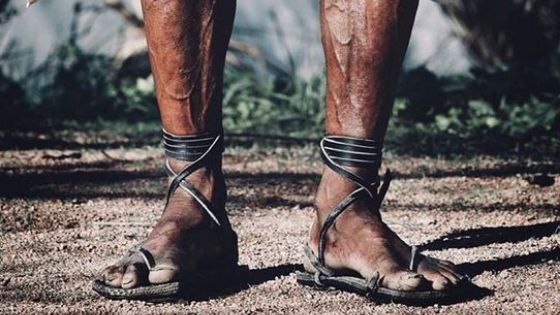
I often get asked this question by runners: Is it OK to run in cheap trail running shoes? I get it. Times are hard, people struggle to make ends meet. I have been there before. We try to balance the daily stresses of our lives with some outdoors activity but question the price of another pair of running shoes compared to paying for the next meal.
Is it OK to trail run in cheap trail running shoes? Absolutely you can trail run perfectly well in cheap running shoes. In fact, according to a recent study, inexpensive running shoes are better rated than expensive ones by most runners. Just don’t expect a very cheap pair of trail running shoes to last beyond a handful of runs.
We weigh up the cost. Do I really need those expensive (perhaps even overrated) pair of trail running shoes? Or can I just as easily make do with my el-cheapo runners picked up from the local Chinese shop and have the same results? The answer may surprise you.
Weighing Up Your Options
You get durable trail running shoes and you get cheap trail running shoes. You need to be aware that as the shoes become cheaper you will lose durability.
As your less durable trail running shoes start breaking down you will increase your injury risk. As long as you keep in mind that your cheap trail running shoes will last less than 200 miles in most cases you should be OK.
In 2015 I had the opportunity to test a pair of shoes from a well known US brand. They were marketed as being a “budget option”. Running ten to fifteen miles a day I wore clean through the shoe under the ball of my right foot in under three weeks. Like I could put my hand into the shoe and stick my finger out through the hole.
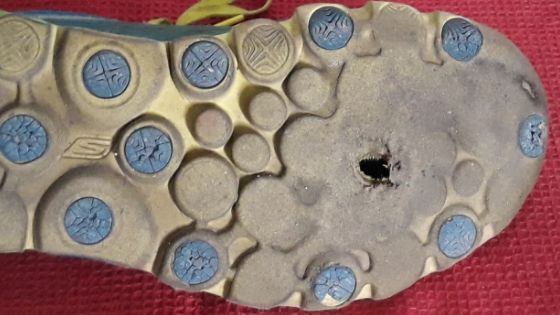
The cheapest trail running shoes that I have seen are the ones worn by the Tarahumara tribe. I am talking about the original huaraches referenced in Born to Run and not the commercial version shipped from Colorado. The originals are often made from recycled car tires and last as little as a single run before repairing the attachment straps.
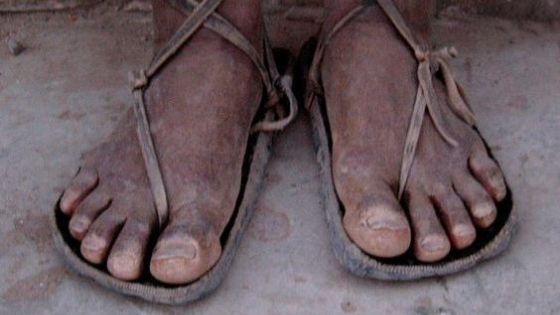
How Cheap is Too Cheap?
Back in the day, I wanted to run cross-country in high school. I was permitted to do so. However, I had to fund my own pair of trainers from my allowance for the first season to prove I was serious. In 1982 money my allowance was around $3 a month.
With my limited budget, I went shopping for trainers. What I could afford were the type of trainers that you could afford were a pair of North Star (Canadian brand from the 1970s) trainers that had velcro in place of laces. If memory serves I got change from a Dollar.
That pair of $1 North Star trainers lasted me a full 25-week cross-country season. A season that consisted of two 5-mile training runs on asphalt and one 5-mile cross-country race on trails each week. That’s an amazing 375 mile total. Though to be honest I only weighed around 105lbs back then.
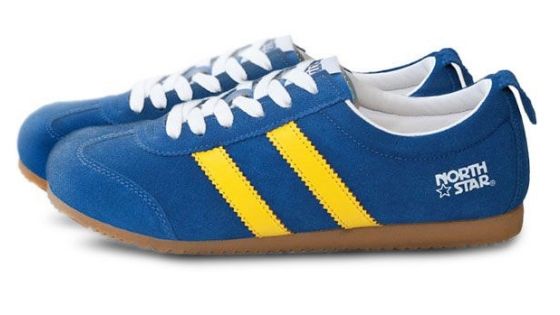
For my second cross-country season, I upgraded to a pair of Nike entry-level trainers that had the (now retro-classic) waffle-iron tread pattern. Those waffle-tread Nikes lasted me two full seasons, in other words over 700 miles of use. Towards the end, I did need to patch up wear marks on the outer sole quite regularly.
The reason why a pair of trail shoes can retail for as little as $25 to $35 is often due to cost-reducing shortcuts in the manufacturing process. Those shortcuts will impact on the shoe’s durability.
The shortcut that I have seen most often is what I call the hollow heel. These shoes have the outward appearance of having a solid foam midsole. In reality, the midsole foam is just an outer shell that is barely wide enough for gluing to the uppers. This leaves the area under all of the weight-bearing parts of your feet completely hollow. The question not if but rather when these shoes will have a complete midsole collapse.
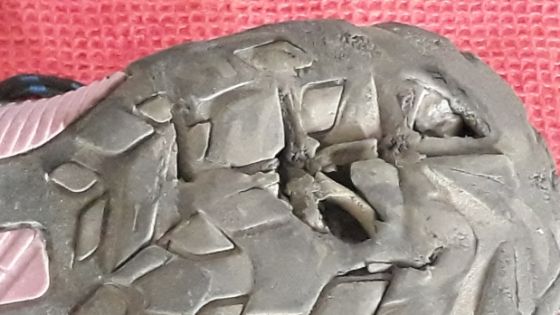
The price that you will end up paying for such cheap trainers over the long term will be chronic long-term injuries like Achilles problems, shin splints and potentially even stress fractures. If you already have a predisposition to any of these problems, the midsole collapse of cheap trail running shoes will cause a flare-up of your problems.
The biggest problem with this type of midsole collapse is that such a collapse never happens evenly. For me, the collapse is usually first on my right shoe. Because I am a forefoot striker, my shoe will tend to collapse under the ball of my foot. That causes my one foot to pitch forward with a higher heel drop angle – causing an uneven load on my legs.
I can imagine that this must be infinitely worse for heel striking runners. They will be running fine one moment, and the next instant their heel slams down onto the ground. That will also cause an immediate foot-flex and a shock load to the Achilles tendon and soleus muscle.
Are Expensive Running Shoes Overrated?
In December 2018 there was a study done of customer reviews of running shoes, both trail running shoes, and road shoes. In all, 391 different shoes were compared from 24 different shoe brands. Data was collated from 134,867 different customer reviews.
The first interesting fact that I noticed from the study was that the cheapest pair of running shoes listed in the study was priced at $50 a pair while the average of the 10 cheapest pairs was $61.
My guess is that once the price point got below $50, the shoe quality dropped off so dramatically that it would have completely skewed the theory of diminishing returns that was the goal of the study. Diminishing returns being that beyond a certain critical point each 10% increase in price does not equate to a 10% increase in quality.
So it comes as no surprise that customer ratings of shoes decrease as the price increases. That is because customer expectations generally increase in proportion to the increasing amount they spend on a pair of running shoes.
That said, how do the ratings stack up? The 10 cheapest shoes in the study average at a price point of $61 a pair. The average customer satisfaction rating of these shoes is 86%. On the opposite end of the scale, the 10 most expensive pairs of shoes in the study have an average price of $191. These 10 pairs of shoes had an average customer satisfaction rating of 79%.
As you can see, you can get a perfectly decent pair of running shoes for well under $100. It is also clear that spending buckets of money on the most expensive running shoes will not result in an improved experience out on the trails.
Having access to all that data from over 130,000 customer reviews the temptation was too great. I did a sort of the data of only trail running shoes to see which pair of trail running shoes came out with the best customer satisfaction rating. The result, with an amazing 97% score was the Speedgoat by Hoka One One. The Speedgoat is one of my select pairs of shoes that I use. To see what trail types I find are the best match for the Speedgoat’s abilities, take a look at this piece that I wrote about the specific different shoes that I use in specific conditions and why.
Are Expensive Running Shoes a Waste of Money?
In October 2007 a small study was published in the British Journal of Sports Medicine. The outcome of that study was that the amount of protection for your feet is not different between the shoes that were tested irrespective of brand or price.
Nine pairs of trainers were selected from a range of brands and price points. The participants in the study were not told what the shoes had cost. Though, to be fair experienced runners would likely have recognized some of the top-end models.
Each shoe was fitted with a special insole that was able to record Plantar pressure. In other words, the shoes measured the force between the foot and the ground in eight different areas of the sole.
A detailed analysis of the results showed two things. I was expecting the first, but not the second. The first result was that all the shoes performed differently in different areas of the foot. That is because no two shoe models have an identical design. Secondly, overall there were no major differences in plantar pressure when averaged across the whole foot.
What was noticed was that plantar pressure was less in lower and mid-range shoes than in top-end expensive models.
This is understandable from a design point of view. Runners will be spending more on top-end shoes because they are looking to get a performance benefit from the more expensive shoes. Shaving time off a personal record becomes the driving factor in determining a shoe purchase rather than comfort.
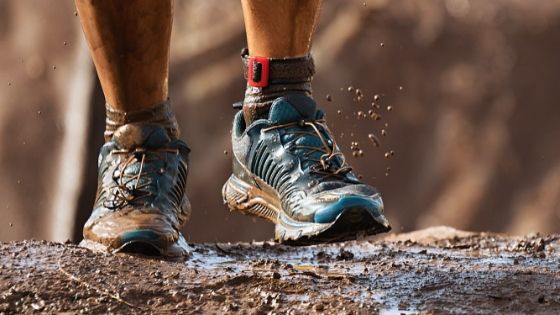
Shopping For Bargains
Spending less does not always equate to compromising on trail running shoe quality. Back in high school, my main running season was in winter for the cross country season. That meant that the start of my season was the same time that shops would be having their end of summer sneaker clearance sales.
That set the tone for what I would end up doing most of my adult life. My theory was always Dollars saved on equipment equates to more available to spend on race entries.
That doesn’t mean that I was a spendthrift to the extent of putting myself at injury risk.
Every year major shoe brands bring out a new and improved model. Immediately when that happens the previous iteration of that model becomes “redundant stock”. Both wholesalers and retailers need to free up shelf space for the new and more profitable shoe model. As a result, prices on the redundant model get slashed dramatically.
For instance, my current road shoe is the Bondi 5 by Hoka One One (You can read my long-term review here). I bought mine after the Bondi 6 was released at a $60 discount. I used the $60 for more race entries giving myself the motivation to keep training.
On Holiday Without Your Expensive Branded Trainers
Forgot to pack in your brand new pair of Nike Vaporfly Next% (available on Amazon)? Not to worry. Pick up a pair of cheap trainers, enjoy them while they last (for the duration of holiday) and then you can dump/donate them afterward.
It has happened to me before. I remember being away at a conference and checking STRAVA in my hotel and seeing a trailhead with a bunch of awesome looking routes and sectors less than a mile away.
My solution was to log into Amazon was fortunate enough to find a sale on the Asics Gel-Venture 6 (available on Amazon), and got change from $40 even though the color scheme would not be anywhere near my normal choice.
Two days later the shoes were delivered to my hotel and I got to hit the local trails at sunup every morning for the remainder of my two-week conference. Some of those runs were with a college kid that worked at the hotel. The kid’s trail shoes were completely blown-out and we were the same size, so I gifted him the Asics on my last day of the conference.
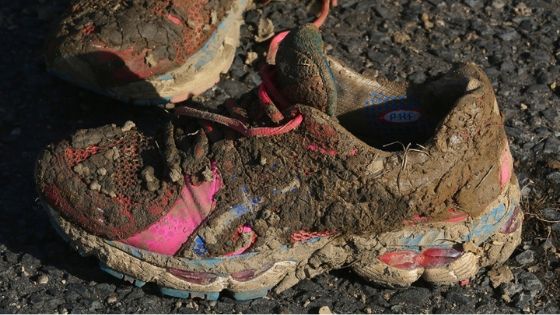
What to Look Out For When Buying Cheap Running Shoes
The most important factor to consider when getting cheaper shoes is that they are sport-specific. For instance, gym shoes (weight lifting trainers) tend to have stiff soles in order to give you the most stable stance possible while lifting heavy. These are hardly ideal for any kind of running as they will restrict the movement of muscles and tendons in your feet.
Most of the time you will be able to use road running shoes out on the trails, though not ideal. Most runners heading out onto trails will use road shoes for their first couple of trail runs until they realize how much more fun running on trails actually is.
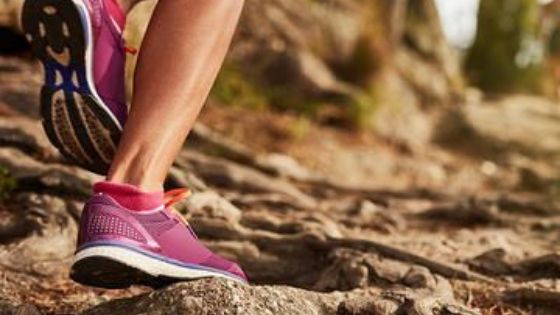
However, cheap road tunning shoes often compromise on outer sole quality. The result of this is a whole lot less grip. This is not something easily noticeable on dry, flat asphalt once you have momentum. Take that same marginal traction off-road onto a loose surface, undulating trail and suddenly you risk a shoe slipping as you push off on each stride. If you are lucky this will give you mere Achilles tightness. If not a torn soleus or worse could be the outcome.
That is why, when it gets to the cheaper end of the spectrum, trail run specific shoes are your better option. While it is true that the ruggedness of a cheap trail shoe will mean it will be heavier than a cheap road shoe, a couple of ounces is a small trade-off against staying injury-free. The goal with your cheap trail running shoes will be simply to enjoy your trail running, not setting the Fastest Known Time on the Appalachian Trail.
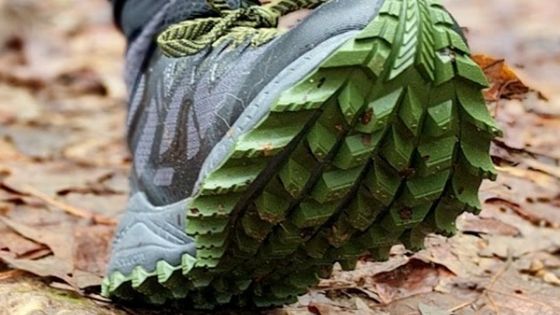
Do You Need Cheap Stability Shoes For Trail Running?
There has been the long-held belief that overpronators need stability or motion control shoes. Back in the days when I used to overpronate a lot, I tried a number of different motion control shoes.
The trouble that I found with cheap motion control shoes was that I got hurt every time I wore them. This was caused by two factors. Firstly, the shoes had a very high heel-toe drop to force an aggressive heel strike and forward roll toward the toe. Secondly, they all a plastic heel cup just below the shoe liner. The thin but super rigid plastic almost always had a sharp upper edge like the knife in those plastic cutlery sets.
The combination would result in me getting sliced ankles every time. I got lots of practice washing bloodstains from my running socks. That was also when I switched to wearing black socks out on the trails. I remember one time getting cut by a cheap stability shoe on my right ankle when I was trying it on in the store.
Do You Need Socks With Cheap Trail Running Shoes?
My feet tend to sweat a lot. so not wearing socks means a never-ending build-up of stinky foot bacteria.
When I raced sprint distance triathlon I used to race without socks when I started out because that’s what triathletes do. The idea is that in a short sprint distance race fiddling with socks on wet feet is a waste of precious time. The result was blisters on my feet, every time. When I looked at my numbers, blisters were making me about a minute a mile slower. Compare that to the thirty seconds or so it takes to put on a pair of running socks.
In general, with trail running. I will say always wear socks. While trail running your feet will always be moving inside your shoe. That movement between your skin and the inside of the shoe will cause friction and friction leads to blisters. By wearing socks the friction will be between your socks and your shoes, protecting against blisters.
Maybe if the pair of cheap trail running shoes you buy to use while on holiday has no flexibility then consider getting them in a size that will allow you to wear two pairs of socks like we used to do decades ago with those fully rigid mountaineering boots. That way any friction happens between the inner and outer layers of socks.
